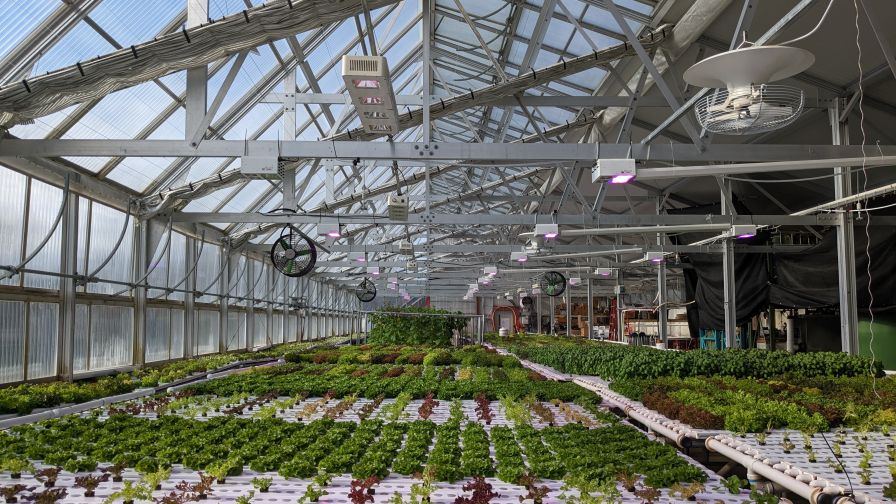Rising Greenhouse Energy Costs Drive Need for Resilience

Photo: Finn & Roots, Gretchen Schimelpfenig
You might have heard that more than half of European tomato greenhouses are going dormant this winter due to high energy prices. Maybe you came across a story about North American growers keeping greenhouses at cooler temperatures to save on heating costs. Or perhaps this year you attended a conference facilitated by top research organizations like GLASE and RII where thought leaders gathered to tackle energy challenges.
Energy will be a trending word this year for greenhouse growers. Energy costs for 2023 promise to be a crucial place for businesses to focus so controlled environment agriculture operations can maintain profitability. In certain regions of the U.S. like the Northeast, utility rate increases will squeeze margins already slim from other financial pressures like inflation.
Energy rate increases are the ripple effects of oil supply constraints and pricing volatility. Much of the electricity generated in North America is sourced from natural gas power plants, and crude oil prices rose quickly following Russia’s 2022 invasion of Ukraine. Utilities propose rate increases to regulators based on forecasted cost of generation to adjust the share paid by their customers and this year, many utilities proposed large jumps.
New England is a hotbed of both electricity and natural gas rate increases. In Rhode Island in October, the commercial electric rate increased between 41% to 51% and natural gas customers are simultaneously feeling the impact of a 9.6% rate increase. In Connecticut, Eversource has proposed a 50% increase in electricity rates, and New Hampshire growers may face a similar situation. In Massachusetts, National Grid electricity customers saw a 64% increase in rates in November, and Eversource’s electric rate increases of up to 43% will be taking effect in January 2023. The data visualization produced by WBUR demonstrates the size of the utilities’ rate hikes in comparison to historical rates; in some regions of Massachusetts, growers may soon pay 34 cents a kilowatt-hour (kWh), up from averages of $0.15/kWh.
Many heated greenhouses use delivered fuels, like propane, if facilities are not connected to a natural gas grid. This year, New Jersey growers experienced high fuel prices this year and passed down higher operating costs to their customers, increasing market price for their products by 30% to 40%. Looking ahead, the Energy Information Administration forecasts “retail prices this winter for heating oil to be 16% higher than last winter and propane prices to be relatively close to last winter’s average”, but fuel costs vary regionally. Growers may have to choose between running heaters and paying higher bills or enduring longer harvest times caused by cooler greenhouse setpoints.
Resilience will also be a trending word for growers in 2023. The energy cost increases in the Northeast U.S. are an example of how utility rates across North America are contributing to increased operating expenses for growers. Greenhouses must employ efficient practices to contend with rising utility rates, but in winter, turning off supplemental lighting or keeping greenhouses cooler results in lower productivity. Rather than stunt plants or wait longer for harvest, resilient facilities can use high-performance equipment and smart energy management practices to save on energy without impacting plant development.
Resilient facilities can prepare for rising energy costs by employing these strategies:
- Exercise informed energy choice. Learn what options are available for energy utilities. In some regions like Massachusetts, growers can choose a competitive electricity supplier to access lower rates.
- Benchmark energy metrics. Many growers track how much energy is used to grow their final product. Monitor energy performance over time to prove the impact of external changes like utility rate increases.
- Consider thermal energy storage. Some greenhouses store solar heat gain during the day in large tanks of water which can be used as buffers to avoid running heating equipment at night.
- Install high-performance technology. Reduce demand for energy from HVAC and lighting systems to improve profit margins. Equipment like IR film can save heating energy by 15 – 35% and thermal curtains can offer energy savings of up to 50% in cold climates. LED horticultural lighting systems can reduce electricity demand by 20 – 50% in greenhouses.
- Partner with experts. Energy engineers like our team at ERI can provide specialized recommendations for optimizing controls to balance energy efficiency and plant productivity. Work with professionals to make operational adjustments and get rebates for efficiency projects.










